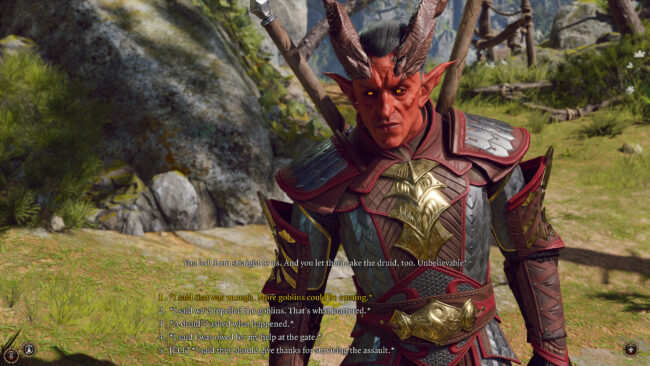‘Baldur’s Gate III’ raises the bar for immersive RPGs
CJ Craig
Contributing Writer

“Baldur’s Gate III” is one of those rare types of games that truly deserves to be called a masterpiece. Larian Studios delivered not only one of the most detailed role playing games (RPG) of all time, but also one of the most technically astounding video games of all time. The scale of “Baldur’s Gate III” puts other open world games to shame, and the level of care and detail that went into crafting this story can be felt all throughout the game.
After three years in Early Access and 6 years in development, “Baldur’s Gate III” was released on August 3 and racked up over $5 million sales in a little over a month. The game is based on the world of “Dungeons and Dragons,” which might sound like a lot to those who have never played the tabletop game. However, “Baldur’s Gate III” delivers the D&D experience in a simple, easy-to-understand way that gives the player a good grasp on the basic mechanics of the game such as dice rolls for skill checks and turn-based combat. D&D fans will also notice a lot of references to the tabletop version, such as the different deities in the world as well as familiar locations such as Waterdeep and Elturgar.
The game itself is a technical achievement that allows full player control in any situation they may find themselves in. One of the core aspects of Dungeons and Dragons is the ability to resolve situations in a number of different ways, and “Baldur’s Gate III” keeps this feeling by allowing the story to mold to fit the player’s choices. If there is a locked door, you can either lockpick it, use magic, or simply beat open the door to allow you to pass. Those choices affect the story as you continue through the game. You may meet someone in the first part of the game and, depending on your interactions with them, they may assist you in the future, or they may try to hunt you down and seek retribution. Of course, if a story moment doesn’t go your way, you can always reload your save in order to get the outcome you want most.
The story itself is a complicated narrative that doesn’t explicitly tell you where to go or what to do. At the beginning of the game, once you leave the tutorial you are free to explore as you like. Along the way you may meet other travelers who share similar interests, allowing them to join your adventuring party. You can also stumble across ancient ruins containing great treasure, villages filled with side quests, and even treacherous lairs such as a Giant Spider nest. Each companion you collect also has a personal story that ties into the overall narrative, and as you progress forward, your companion’s quests become a significant part of choosing what to do next. If a companion doesn’t like your actions, they may even refuse to travel with you anymore and leave your party entirely. The story presents itself in such a way that the player feels like they are also in control of the story, allowing them to take it in any direction they want.
“Baldur’s Gate III” is by no means a perfect game, and even the most hardcore D&D players might find themselves frustrated at certain game mechanics, such as the inventory menus and character stats. These can feel at times a bit too detailed and can make it difficult to easily manage your inventory which is constantly filling up with treasures and trinkets you may find along the way in your adventure. But the engaging narrative and fun of causing whatever chaos you can think of overshadows the nitpicks that come from a game of this scale.
Overall, “Baldur’s Gate III” is an immersive storytelling experience that allows the player to play the game how they want. With over 14,000 different endings, Larian Studios has set the standard that gamers come to expect from a $70 game. And with more updates and content slated to be added in the future, it seems like “Baldur’s Gate III” will hold the title of Best RPG for years to come.

